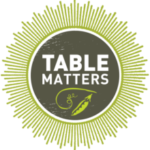Ben Bengtson / North Shore News
A new online map could help North Shore residents take stock of their collective pantries. Table Matters and Vancouver Coastal Health, with input from local partners, have developed an online food asset map that lists North Shore organizations that offer services and goods such as low-cost meals, subsidized groceries, community gardens, food assistance programs, school breakfast programs, grocery retail stores, and more.
The map is part of an effort to connect people with existing food resources in the community as well as highlight gaps when it comes to local food security, explained Margaret Broughton, a VCH public health dietitian and Table Matters chairwoman.
“We still have one in four children who live in poverty on the North Shore, and it is rising,” she said. “We do have some neighbourhoods where up to 20 per cent of the population are living on low income. It’s a hidden thing because nobody wants to jump up and down and say, ‘Hey, I’m poor here,’ especially when your neighbours around you and the other kids at school are relatively well off. People are very quiet about it.”
Through accessing the food asset map, available by visiting the Table Matters or VCH websites, the hope is that North Shore residents – regardless of income – will have an easy-to-use tool for locating the food programs and resources available in their own communities.
“When we look at the North Shore through a food system lens, we have no agricultural land reserve here. We have very little actual food production … we are reliant on transported food and we are reliant on commercial food,” Broughton added, noting the importance for residents and service providers to know what local food assets are available to them.
The online map currently lists 362 food assets on the North Shore, stretching from Deep Cove to Lions Bay.
The map was launched last week, following a VCH City of Vancouver food asset map that was unveiled in October last year.
“It’s been very, very well received in Vancouver so I do expect that once we get the word out to people,” it will be used by many residents and service providers, Broughton noted.
She said she hopes the number of listed assets will grow in time as community members use the map and provide suggestions for new resources that could be included.
Iva Jankovic, a UBC land and food systems student, did the bulk of the research for the food asset map.
“Being from UBC, this is a very different environment for me,” she said. “It’s very spread out, very mountainous, and it’s dominated by a lot of chain stores and things. A food asset map really helps to visualize where the gaps are and what we need more of in the community in order to have a sustainable and successful food system.”
Jankovic noted a lack of smaller-scale grocery stores on the North Shore as well as municipalities’ ongoing mobility and transportation issues as challenges when it comes to local food accessibility.
She also said there could be plans to printout the map and deliver it to local service providers, such as the Harvest Project, so people without easy internet access could have a physical copy of it, citing a similar move that VCH did when it released its Vancouver food asset map last year.
“I hope it just makes it easier for everyone to access and know about food resources, and all the people who are in need of that kind of support they can more easily find things,” she said.
Visit tablematters.ca or vch.ca/public-health/nutrition/food-asset-map to access the North Shore food asset map.
Suggestions for potential assets or resources that could be added to the map can be made by emailing inquiries to [email protected].
Categories
